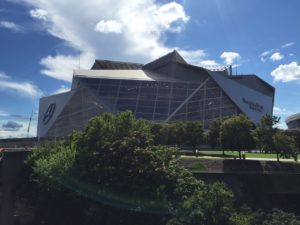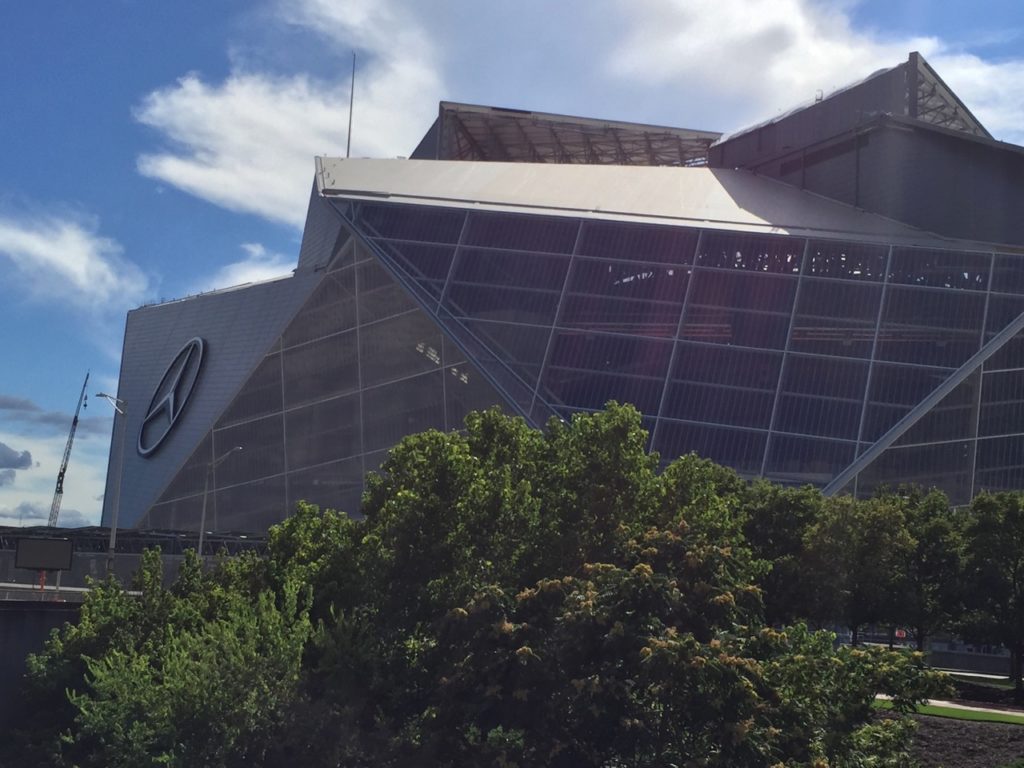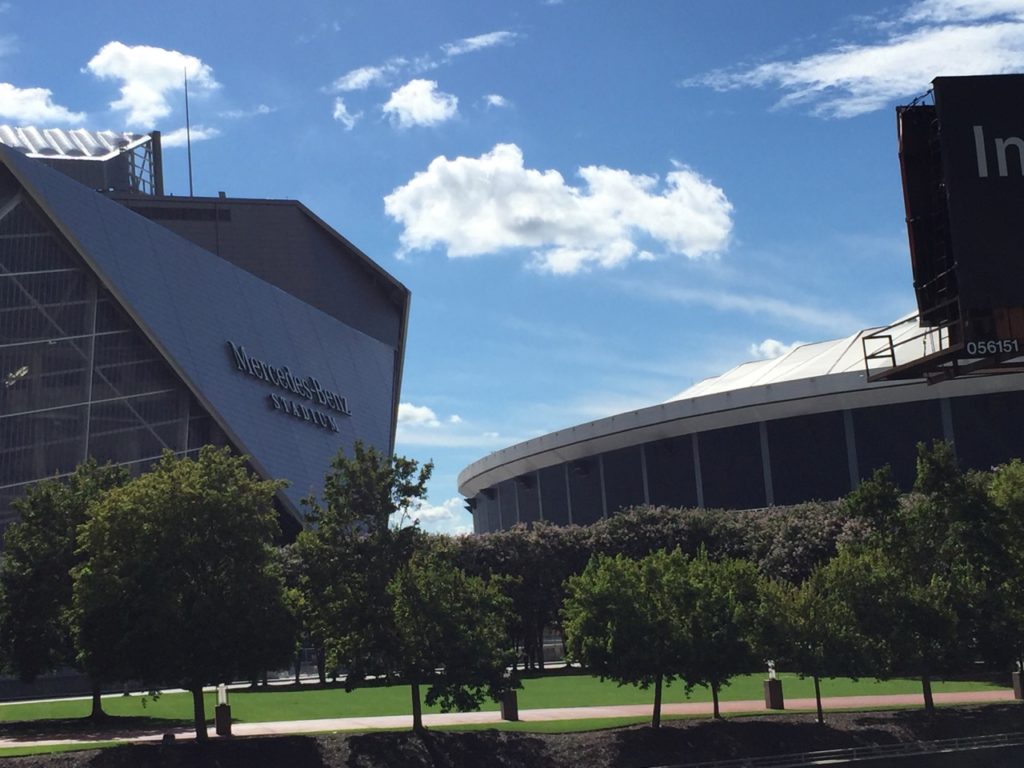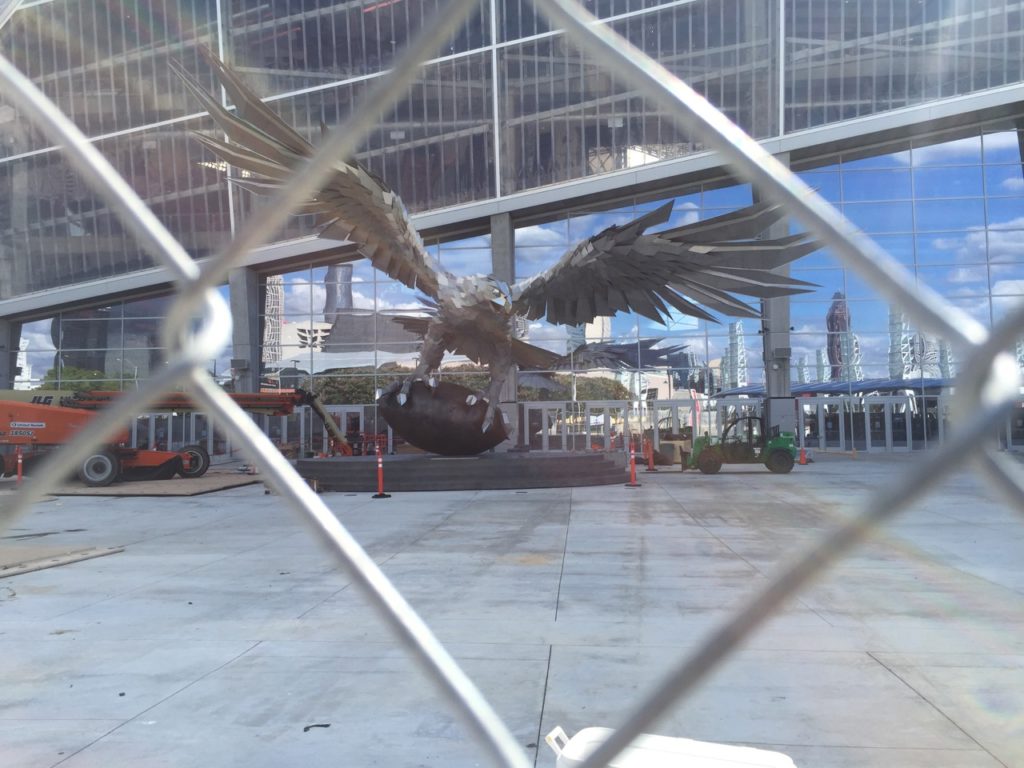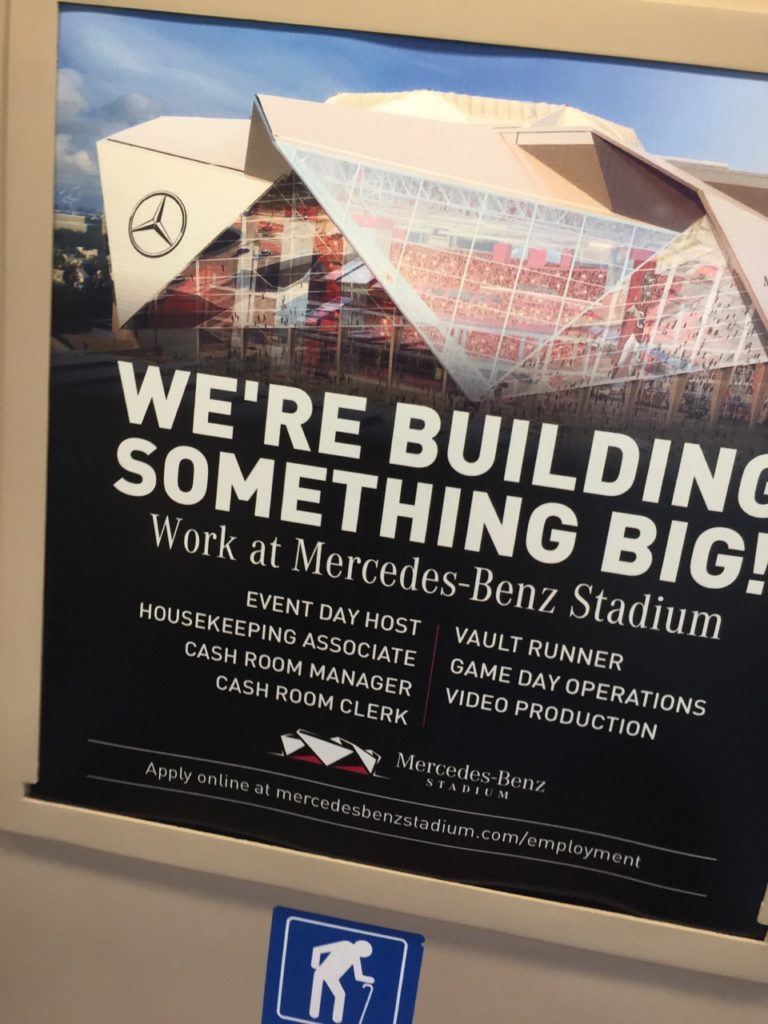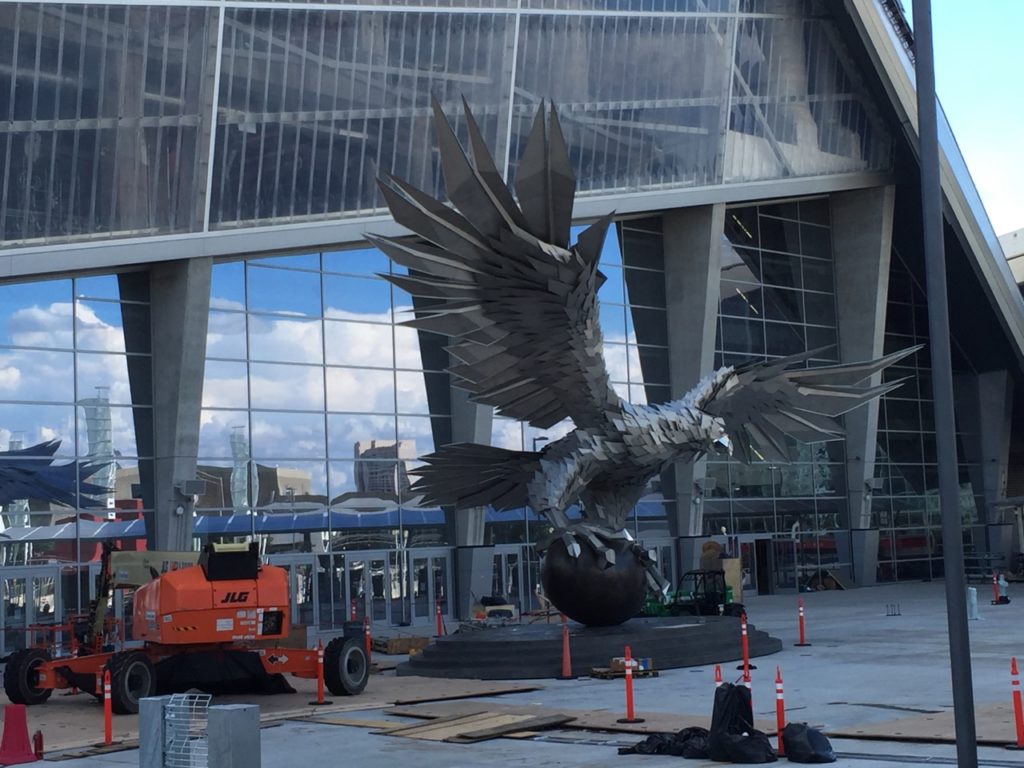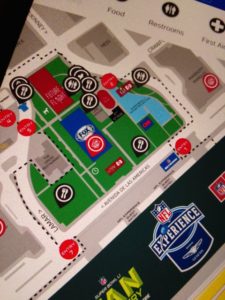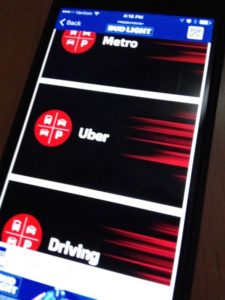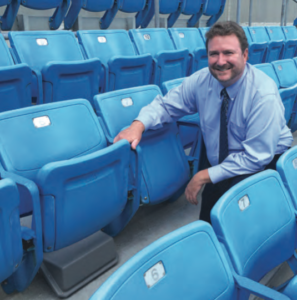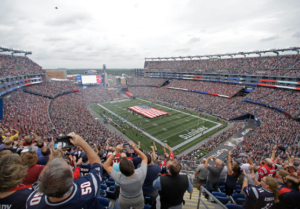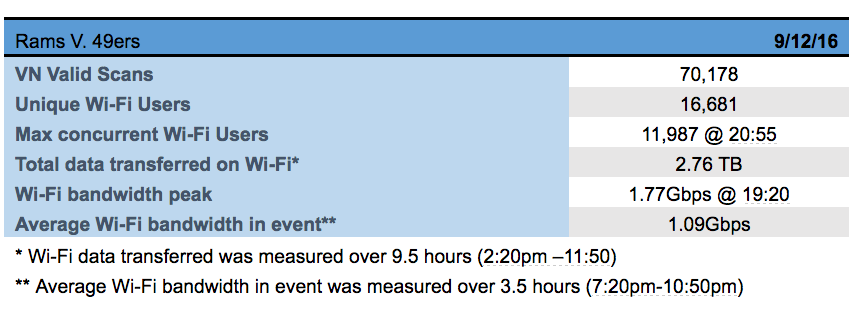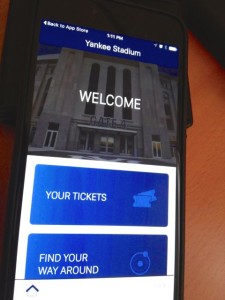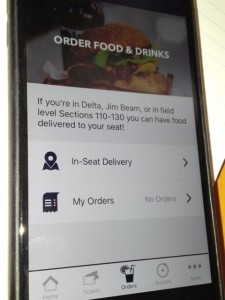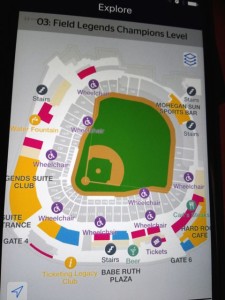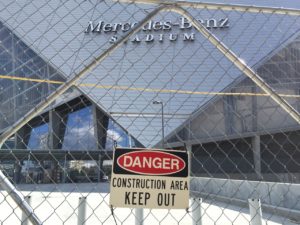
Sorry, this venue is not open yet! Credit all photos: Paul Kapustka, MSR (click on any picture for a larger image)
Built right next door to the Georgia Dome, the new venue looks all finished from the outside, but there are still construction chain-link fences around it keeping anyone from getting too close to the building. A quick visit by yours truly Sunday afternoon got the pictures seen here, including the angular, glassy construction, the big metal falcon (caged for now) but no live look at the halo video board (though we thought we could see the curves inside).
Jared Miller, chief technology officer for AMB Sports & Entertainment, told us on the phone last week that Mercedes-Benz Stadium “is definitely in the final throes” of development, which is scheduled to end on Aug. 26 when the Falcons host their first NFL preseason game. There also may be an earlier public-unveiling event but the NFL date is the first scheduled full-scale opening of the Falcons’ new roost.
Miller spelled out a few previously unconfirmed facets of the technology deployment going on inside the stadium — the Wi-Fi gear is from Aruba, a Hewlett Packard Enterprise company; and lead contractor IBM will also be supplying the stadium’s mobile apps, with separate versions for the Falcons, the Atlanta United FC of the MLS, and one for the stadium itself (to be used for concerts, college football games and other non-NFL or non-MLS events).
Mercedes-Benz Stadium will also have a neutral host DAS run by the Falcons using Corning ONE gear.No in-seat delivery for concessions
Another interesting twist is that Miller said the while the Falcons’ apps will have the ability to allow fans to order food and drink, it will be for pickup at express windows only, and NOT for delivery to seats, a service seen at other venues like the San Francisco 49ers’ Levi’s Stadium. Miller said the AMB team has taken a different approach and expects fans to roam about more inside Mercedes-Benz Stadium, which has many different “experiential” zones where fans can watch the action from someplace other than their seat.
But even with all the different technology and lower food prices, Miller is betting that the one thing that visitors will keep talking about is the halo video board, the main “big screen” that wraps around the inside of the roof in a full circle.
“When fans enter they’re going to look up and go, ‘Wow!’ and do it the first time, and the 10th time they visit,” Miller said. Miller said he was walking back to the stadium recently and saw the halo board in action, and stopped in awe. “I look up and am just blown away by it,” he said. Falcons fans and other interested visitors are looking forward to feeling that feeling soon. More photos below!
Anyone see a halo board in there?
Yes, it’s very close to the Georgia Dome.
Mr. Blank, uncage this bird!
Seen on the MARTA train in from the airport: Still time to get a gig at the stadium!
A better look at the big bird
